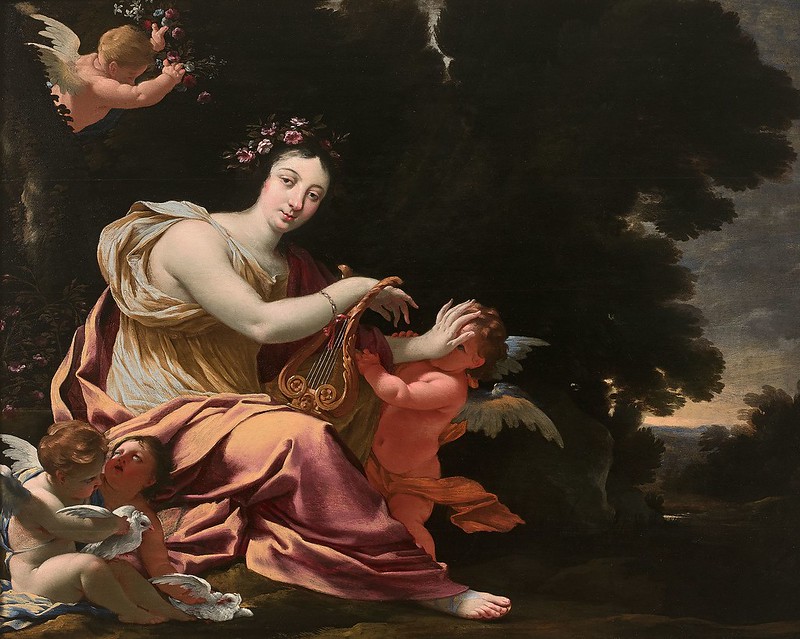Ernst Eichner (1740-1777)
- Concerto (C-Dur) per l'harpa (1771)
Performers: Annie Challan (harp); Antiqua Musica Chamber Orchestra; Marcel Couraud (1912-1986, conductor)
Further info: Ernst Eichner (1740-1777) - Klarinettenkonzert Es-Dur
---
German bassoonist and composer, father of Adelheid Maria Eichner
(1762-1787). As a son of the Waldeck court musician and bassoonist
Johann Andreas Eichner (1694-1768), he must have learnt the violin and
bassoon, and been introduced to the rules of counterpoint and
composition (the basis of his lauded prowess later in ‘strict writing’),
from musicians at the court. On 5 August 1753 he was confirmed. His
marriage to Maria Magdelena Ritter (probably of the Mannheim family of
musicians) undoubtedly took place before 1760, and their first daughter
Adelheid was probably born between 1760 and 1762; a second daughter,
Maria Catherina Elisabeth, was born on 14 August 1764 but died four days
later. On 1 September 1762 Eichner entered the court orchestra of Duke
Christian IV of Zweibrücken (the brother of Waldeck’s Princess
Christiane), where he served primarily as a violinist and later (1769)
was appointed Konzertmeister. He toured as a virtuoso bassoonist from
1767, establishing a considerable fame. In 1770 he travelled in the
prince’s entourage to Paris, where his earliest symphonies – among other
works – appeared in print and where he was placed second to Cannabich
in the Foire Germain symphony contest in 1772. He left the Zweibrücken
court on 18 November 1772 and travelled via Paris to London. There he
appeared as a bassoonist in 12 of J.C. Bach’s subscription concerts
(March–May 1773). In August of that year he was a bassoonist in the
service of the Prussian crown prince, later Friedrich Wilhelm II, in
Potsdam. He interrupted his service there only once, to visit Arolsen
and Leipzig (1775). His early death passed unnoticed by the musical
public.
Although active as a composer only from 1763 to 1776, Eichner left a
noteworthy corpus of symphonies, solo concertos, chamber music and vocal
works. His early style is typified in the solo concertos which were
written before 1769 for the court at Zweibrücken; the chamber and
symphonic works, on the other hand, date from his years as
Konzertmeister or from his tenure in Potsdam. The last solo concertos
seem untouched by his symphonic style; they strongly follow the
so-called ‘sonata-concerto’ in their rounded, cantabile melodies and
noticeably more adventurous harmonies. The sequence of themes is reduced
to a first and second group (not always contrasting), and certain
details depart from contemporary convention in this regard. The 12
two-movement keyboard trios and 24 three-movement symphonies (nos.1–24),
which were two parallel series from the Zweibrücken years, resemble one
another in the treatment of forms and themes, and reveal the
application of Eichner’s symphonic style to his chamber works – a
novelty not universally accepted by his contemporaries. As was the
custom at the time, the keyboard part is predominant in the trios, with
violin accompanying and a cello part merely doubling the keyboard bass
line. The remaining chamber works are all more or less isolated or
occasional pieces, if not arrangements from contemporary operas. The
core of Eichner’s output is his symphonies. Within the relatively brief
span of seven years he composed 31 orchestral works (24 of them between
1769 and 1772) whose progress outlines a remarkable maturing of style.
Eichner fits into none of the important 18th-century ‘schools’, but was a
solitary figure who, like so many of his contemporaries, aimed to give
structure and substance to the new genre of the ‘concert symphony’.

Cap comentari:
Publica un comentari a l'entrada